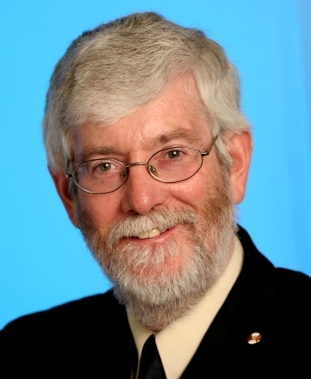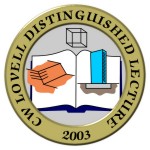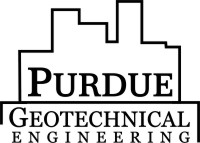
6th C.W. Lovell Distinguished Lecture
| - |
September 21, 2007

R. Kerry Rowe
Long-Term Performance of Contaminant Barrier Systems
Barrier systems for waste containment facilities typically include both permeable drainage and low permeability liner components and are constructed using a combination of natural and geosynthetic materials. This lecture describes the latest findings with respect to the long-term performance of these systems based on theoretical developments, laboratory studies and observed field behavior. It draws together consideration of both soil mechanics and geosynthetics and demonstrates that the components of the barrier system should be considered as part of a system where the characteristics and performance of one component impact on that of another.
Field measurements and theoretical calculations show that composite liners are substantially better than single liners in terms of controlling leakage from landfills. It is shown that composite liners involving a GM over a geosynthetic clay liner (GCL) gave rise to substantially less leakage than those involving a compacted clay liner (CCL). The observed leakage through composite liners can be explained by the holes in, or adjacent to, wrinkles/waves in the GM and this leakage can be calculated using simple equations.
High density polyethylene (HDPE) GMs are shown to provide an excellent diffusive barrier to ions. However, non-polar organic compounds readily diffuse through HDPE GMs and a combination of GM and an adequate thickness of liner and attenuation layer are required to control impact to negligible levels. The long-term performance of HDPE GMs is discussed and service life predictions are provided for MSW landfills.
The use of numerical models for predicting the service lives of engineered systems and long-term contaminant transport is demonstrated.
About R. Kerry Rowe
| - |
Dr. Kerry Rowe is Vice-Principal (Research) and Professor of Civil Engineering at Queen's University in Kingston, Canada. He obtained a BSc(Computer Science), BE(Civil Engineering), PhD, and D.Eng. from the University of Sydney, Australia. Prior to joining Queen's in 2000, he worked for the Australian Government Department of Construction for 6 years, and then spent 21 years at the University of Western Ontario, including 8 years as the Chair of the Department of Civil and Environmental Engineering. Author of more than 190 refereed journal papers, 3 books, 14 book chapters, and 200 full conference papers, he has extensive research and consulting experience in the geotechnical and geoenvironmental engineering field. His research has been recognized by numerous awards including being a former NSERC Steacie Fellow, a Killam Prize winner (Canada's highest engineering research award), and was selected by the British Geotechnical Association to present the 45th Rankine Lecture in March 2005. He is a fellow of both the Royal Society of Canada and the Canadian Academy of Engineering. He has also been twice honored for outstanding teaching, receiving the Ontario Confederation of University Faculty Associations' Excellence in Teaching Award and the University of Western Ontario's Edward G. Pleva Award for Excellence in Teaching.
Dr. Rowe is a past president of the Canadian Geotechnical Society and the International Geosynthetics Society. He is currently President of the Engineering Institute of Canada and editor of the journal Geotextiles and Geomembranes.
Program
| - |
| 10:00 a.m. | |
| 12:00 p.m. | Lunch with Students (CIVL G212) |
| 4:30 p.m. | Lecture (FRNY G140) |
| 6:00 p.m. | Reception and dinner (West Faculty Lounge, Purdue Memorial Union) |
Photos of 6th C.W. Lovell Distinguished Lecture
| - |


